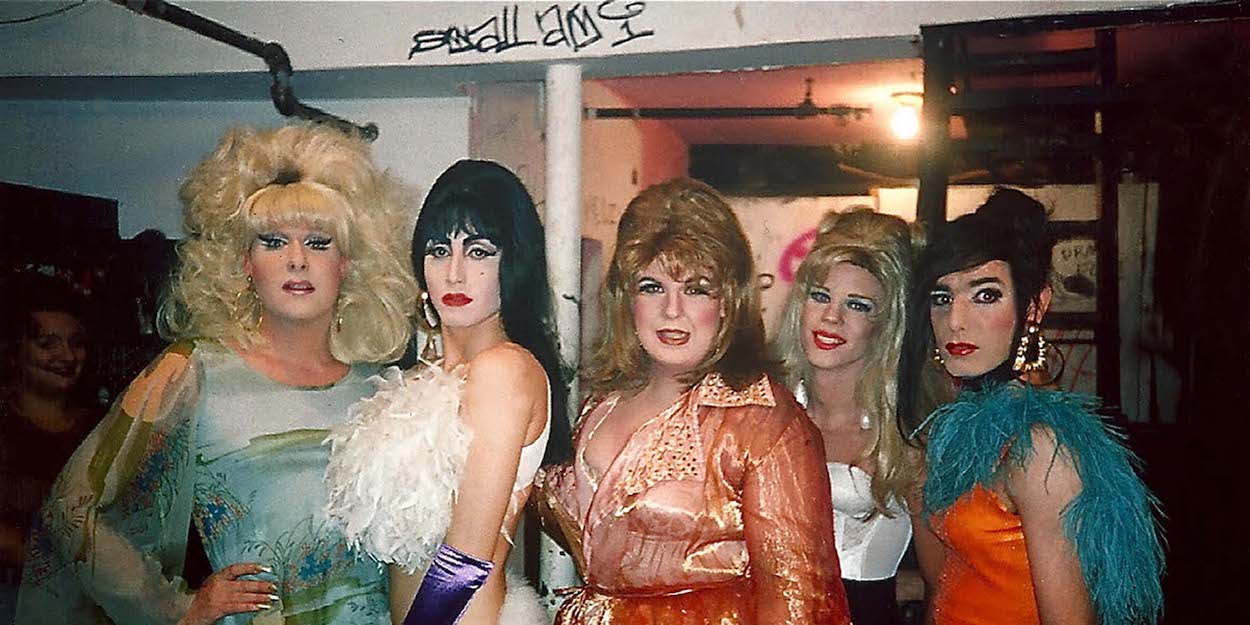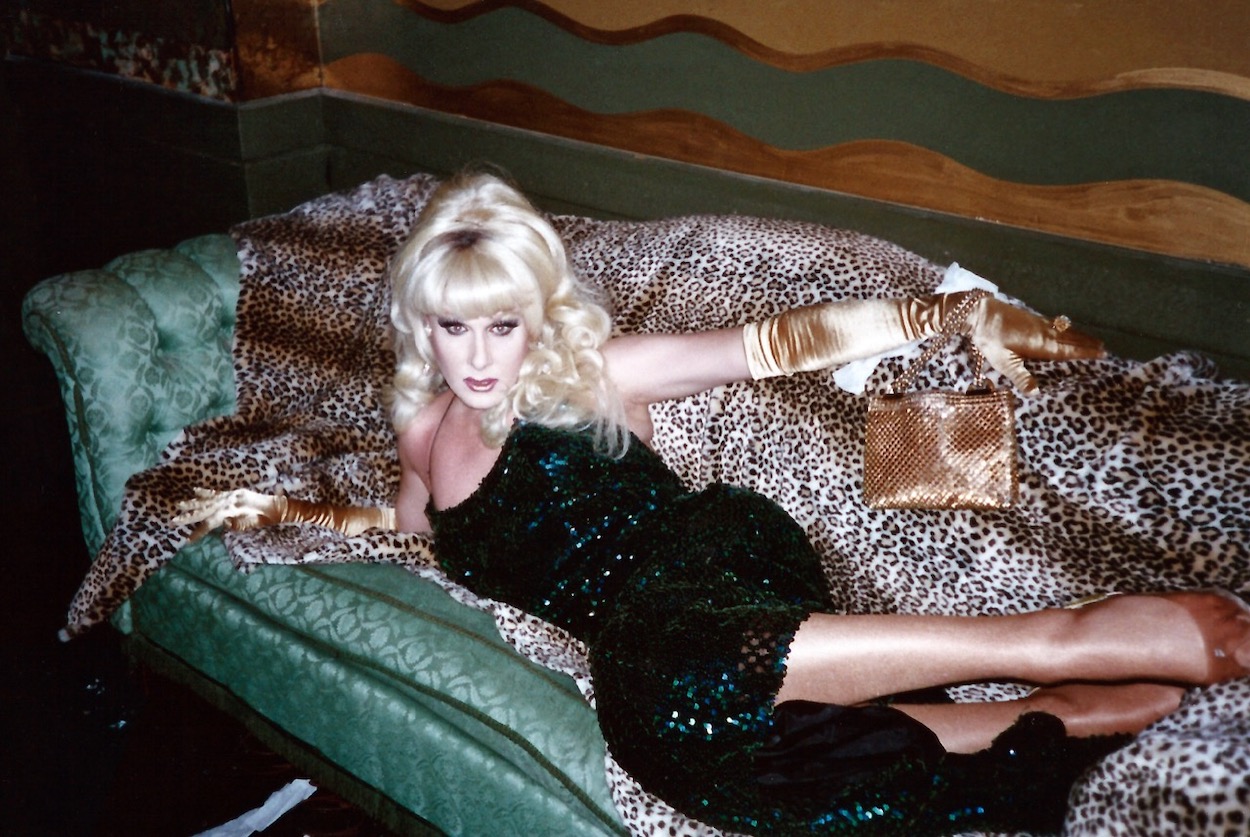The oceanic interracial, same-sex commitment ceremonies and mutual sperm oil massages of Herman Melville’s Moby-Dick; the port town bloodlust of Jean Genet’s Querelle of Brest; the horny archeology of Alvin Baltrop’s cruisy pier photography; Arthur Russell proofing mixes of his ecstatic disco anthems while staring at waves from the Staten Island Ferry. The waterfront has been queer territory for centuries. On an unseasonably warm Friday night on Manhattan’s South Street Seaport, drag royalty Linda Simpson made the case that queens and other drag performers have also made themselves at home on the shores.
“Queer History: Drag and the Waterfront” set sail with a series of slideshows narrated by Simpson showing photographs, which she took with a cheap camera on color film mostly in the late ‘80s and early ‘90s, that document with warmth and shade the drag legends and transgender icons that defined their time in downtown New York City. Lady Bunny, Hapi Phace, RuPaul, and more pose in the basement dressing room of East Village hotspot the Pyramid Club or on the streets of the Meatpacking District. Today, she said, those areas are “pretty developed. But then, it was fairly crude. And exciting.”
It might make intuitive sense that—a quick distance from more policed neighborhoods—those waterfront areas stuffed with warehouses, shipping yards, and bustling workers coming in and out of the city became cruising grounds. More surprising is their transformation into catwalks and theater sets for queer performers. But the ballroom kids promenaded on the piers and, among many others, David Wojnarowicz and Peter Hujar and Paul Thek made art there. As RuPaul fanned the flames of the ‘90s drag boom, the beloved drag festival Wigstock moved from grungy Tompkins Square Park to the big time (and big spaces) of the West Side’s piers.


